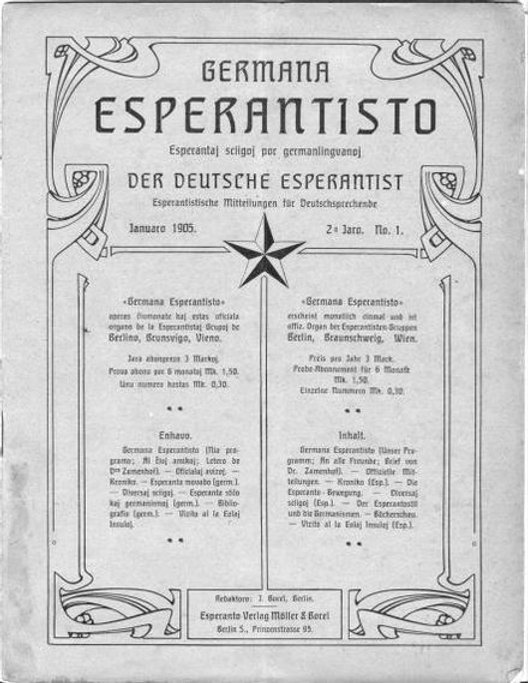Though they have become an arguably less popular medium as handheld and digital technologies advance, newspapers have played an integral social and political role since their introduction in 1605. The foundations of societies have often been built on the contents of a newspaper, whether their presence makes a region more democratic or their censorship makes a country more authoritarian. This is especially true of La Esperantisto, whose publication anniversary passed on September 1, and whose significance in history and linguistics is particularly interesting.
The publication of the newspaper begins with Ludwik Lejzer Zamenhof, a Polish ophthalmologist living in what was, at the time, the Russian Empire. His nationality, Jewish faith, and close proximity to the Polish-Russian border estranged him in a largely religious, nationalistic, and anti-Semitic part of Russia. He understood most of the stigma around his upbringing as the root of one glaring issue: nobody could speak with one another. Russians, Poles, Jews, Belarusians, and Germans had no mutual language, and therefore, could not resolve their differences themselves.
Enter Esperanto, hailed as the most successful constructed language with over two million speakers worldwide. Esperanto is the distorted but wonderfully simple lovechild of multiple Indo-European, Romantic, and Slavic languages with roots in Yiddish. It uses the Latin alphabet with six additional characters (, , , , , and ) as well as a largely European grammar and syntax that infrequently deviates closer to some Asian languages, such as Chinese. Zamenhof created the language to resolve the conflicts he saw around him, as he had studied multiple languages and was thought to have been natively bilingual in both Russian and Yiddish. The language is named after his pseudonym, Doktoro Esperanto, meaning one who hopes.
Aside from publishing academic and political works advocating for the study and use of Esperanto, Zamenhof published La Esperantisto starting in 1889. At its height, the periodical had 889 subscribers who could enjoy translated articles, poetry, and essays published in Esperanto. Before it lost subscribers due to censorship and controversial changes, La Esperantisto set a precedent for newspapers and periodicals and formed a foundation for previous and existing Esperanto speakers to create an Esperanto culture that survives to this day.
Note that in the interest of clarity and focus I did not discuss some of the rules that make Esperanto so beautifully easy and the fact that learning Esperanto makes learning other languages much easier, but you can find additional readings on that here:
http://literaturo.org/HARLOW-Don/Esperanto/rules.html
https://www.fluentin3months.com/2-weeks-of-esperanto/
https://en.wikipedia.org/wiki/Esperanto_vocabulary
And, of course, the duolingo course:
https://www.duolingo.com/course/eo/en/Learn-Esperanto-Online
Sources:
https://www.britannica.com/topic/Esperanto
https://www.britannica.com/biography/L-L-Zamenhof
https://en.wikipedia.org/wiki/La_Esperantisto
https://en.wikipedia.org/wiki/L._L._Zamenhof
https://en.wikipedia.org/wiki/Esperanto
https://timesofindia.indiatimes.com/When-and-where-was-the-first-newspaper-published/articleshow/2477418.cms
https://en.wikiversity.org/wiki/Esperanto/Grammar_Rules
 Justin Zimmerman, Alumni at AIT
Justin Zimmerman, Alumni at AIT 
 Greta Thunberg Leads Global Climate Strike
Greta Thunberg Leads Global Climate Strike